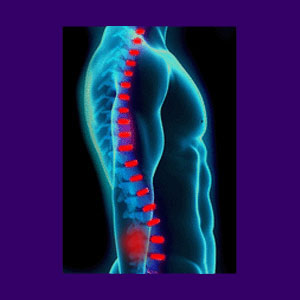
Lumbar facet syndrome is the most common type of spinal joint pain in both location and expression. The lower lumbar vertebrae virtually universally experience degeneration in the facet joints, possibly causing the patient to endure the typical minor aches and pains of aging. However, it should be known that severe pain due to facet joint changes is extremely rare and is not a normal part of spinal aging for most people.
Lumbar facet joint pain is often a controversial diagnosis, since most patients who are labeled with the condition do not demonstrate verified evidence of any spinal pathology. Furthermore, many patients do not even express symptoms that are logical when considering a facet syndrome diagnosis. These are important points to consider when evaluating a diagnosis of facet joint pain in the lower back region.
This discussion provides a detailed analysis of lumbar facet syndrome, including its causes, possible symptoms and the best forms of treatment for the condition. We will also discuss why so many patients are misdiagnosed with lumbar facet joint pain when their symptoms are due to some other structural or nonstructural source process.
Lumbar Facet Syndrome Causes
As mentioned above, degeneration of the lumbar facet joints is basically a universal condition among adults. As we get older, it is normal that the facet joints will demonstrate minor to moderate arthritic changes, as well as the deterioration of the synovial capsules surrounding these joints. This degeneration is caused by the frequent bending and flexing of the lumbar spine necessary to live a typical life. It should be noted that lumbar facet joint degeneration is not inherently painful. In fact, only rare cases will produce any significant symptoms whatsoever.
When facet joint deterioration becomes pathological and symptomatic, it is diagnosed as facet joint syndrome. The primary causes of painful facet joints include problematic osteophytes which interfere with normal joint movement, combined with the generally increased interactions between vertebral bones due to a wearing away of the protective cartilage and lubricating fluid in the joint. Facet joint pathology is usually minor, but can become moderate to severe in very uncommon instances.
Lumbar Facet Joint Syndrome Symptoms
Most facet joint degeneration is not symptomatic or will only produce minor occasional aches and pains common to aging. However, facet joint syndrome denotes spinal pathology and will produce symptoms in most patients. Typically, pain is experienced only upon mobilizing affected joints. Often, the pain is limited to highly specific ranges of motion and particular movements.
Symptoms of facet syndrome should be located directly on the spine. They should be localized and not radiating or far ranging in virtually every case profile. The most common location by far is between L4 and L5, as well as between L5 and S1. This is the region that suffers the earliest, most significant and most common degeneration in the human vertebral column.
Most patients will suffer minor to moderate pain that may resolve organically. Others will require treatment if their pain remains a chronic burden or intensifies over time.
Lumbar Facet Syndrome Diagnosis and Treatment
When analyzing the accuracy of a facet syndrome diagnosis, the following factors should always be considered carefully:
Do the symptoms present logically in terms of location, expression and severity? Are symptoms present when the joint is not being mobilized?
Are the symptoms consistent or do they change in location or presentation? Do the symptoms affect muscular tissues?
Is there evidence of spinal pathology to support the diagnosis of facet syndrome?
If the diagnosis is deemed to be sound, treatment is most commonly symptomatic in nature and conservative to moderate in scope. Drug therapies are effective for most patients, but come at great risk to overall health and wellness. Injection therapies demonstrate more direct risks to the spinal anatomy, such as infection and spinal fluid leaks, but spare the systemic effects of oral route drugs. Some patients find relief from manual joint manipulation by a chiropractic practitioner.
Surgical methods of care can be very effective at ending focal areas of facet joint pathology using the most minimally invasive practices. In some cases, spinal surgery is truly the best course of action for select patients with verified facet syndrome conditions. However, no spinal operation should be taken lightly and patients should always discuss the risks and benefits with their surgeons prior to proceeding with invasive treatment. You can read more about facet joint surgery to understand your invasive treatment options.





